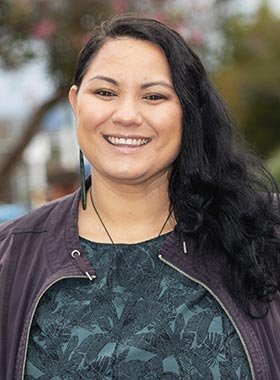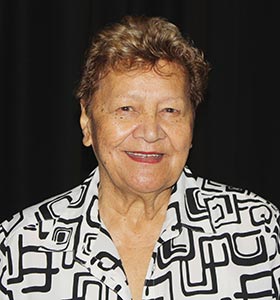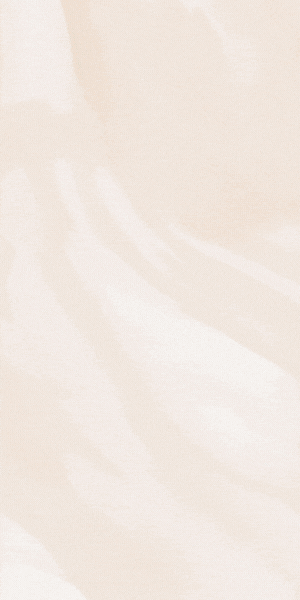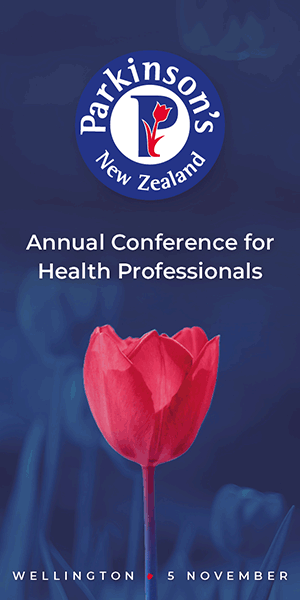 In honouring the voices of Māori women, of Māori tapuhi (nurses), ka maumahara tātou, we remember. We descend from atua wāhine Papatūānuku, Hine Ahuone, Hine Titama, Hine te Iwaiwa. The strength of women is gifted to us by our tūpuna to nurture, support, to transfer knowledge, and to provide manaakitanga (caring attitude), aroha (compassion), ukaipotanga (nurturing) to our whakapapa (genealogy), our whānau (family), our hāpu (sub-tribe), and to our iwi (tribe).
In honouring the voices of Māori women, of Māori tapuhi (nurses), ka maumahara tātou, we remember. We descend from atua wāhine Papatūānuku, Hine Ahuone, Hine Titama, Hine te Iwaiwa. The strength of women is gifted to us by our tūpuna to nurture, support, to transfer knowledge, and to provide manaakitanga (caring attitude), aroha (compassion), ukaipotanga (nurturing) to our whakapapa (genealogy), our whānau (family), our hāpu (sub-tribe), and to our iwi (tribe).
Māori women have always stood on the marae as leaders – the first to lead whānau onto the marae, the first voice heard at pōwhiri. We stand as equals to men. One gender does not outshadow the other. In western societies, the male gender stood dominant, and with colonisation, women’s voices were silenced. These types of belief systems marginalised Māori women. In te ao Māori, there is duality – one cannot exist without the other. With every atua wāhine (female Māori god) there is an atua tāne (male Māori god), ira wāhine, ira tāne (the divine feminine, the divine masculine).
Our women have always stood as rangatira, and signed Te Tiriti o Waitangi in 1840. In 1893, New Zealand women became the first in the world who had the right to vote. Meri Te Tai Mangakahia led the voting rights for Māori women, to participate in governance and to have the same rights as non-Māori women.1 However, this was not the case in nursing. The Nurses Act 1901 silenced Māori women’s voices, even though women’s rights were extended to include voting and standing for school boards or educational facilities.2
Mana undervalued
The Tōhunga Suppression Act 19073 and the Quackery Prevention Act 19084 stopped Māori practising rongoā and treating whānau; these acts assimilated and colonised indigenous wellbeing systems. Being wāhine, Māori and nurses meant being overshadowed by medical dominance. This created power differences and deleted traditional health practices. It was said at the time that the Nursing Council was using this process for “weeding out the unfit”.5 This led to Māori women not registering as nurses under their Māori names, again undervaluing the mana of wāhine Māori.
Institutional discrimination is deeply embedded in nursing, due to policies and the elevation of Florence Nightingale. This has oppressed Māori nurses, and is ingrained in the Aotearoa nursing culture in ways that “unfairly restrict the opportunities” of Māori and privilege other groups, who are racialised as superior in social systems of oppression.6
Māori nursing leaders faced assimilation, with policies that would not allow them to be Māori or to speak te reo – women had to use non-Māori names to become registered nurses. The earliest identified Māori nurse to register, in 1896, was Marion (Mereana) Hattaway (née Marion Tangata, and sometimes anglicised to Marion/Marianne/Mary Ann Leonard), from Peria in the Far North.7 Ākenehi Hei was the first nurse to register under her Māori name, in 1908.5, 8 In 1920, the first chief nurse, Hester Maclean, was appointed;9 99 years later, in 2019, Margareth Broodkoorn, the first chief nurse who identified as Māori, was appointed to the position.10

The New Zealand Nurses Union (NZNU) first established Te Rūnanga o Aotearoa, because the union had a higher proportion of Māori members than the New Zealand Nurses Association (NZNA). Tino rangatiratanga, self-determination within the union, was now deemed essential. During an industrial dispute between NZNU and Presbyterian Support Services in Hamilton in 1990, a caregiver involved in the action, Hineraumoa Te Apatu, was identified by the organisers as someone with mana and courage. Supported by these organisers, she and others set up Te Rūnanga, with Rhoda Waitere chairing the first meeting.
At Te Puea Marae in Mangere, Māori Queen Dame Te Atairangikaahu gave it her blessing, and Te Rūnanga was officially inaugurated in 1990. Dot Stitchbury, interim chair, and kaumātua John Ahu were involved at the outset. Nora Rameka, of the Council of Trade Unions, gave support as part of her broader role to help unions establish Māori structures. Te Rūnanga was then officially endorsed by the NZNU committee of management.

Te Rūnanga o Aotearoa was launched in 1990, with its first tōhu (emblem) launched in August 1999. On April 1, 1993, NZNA and NZNU merged to become NZNO.11 As Te Rūnanga membership grew, so did its ability to lead NZNO in things Māori. They identified the need to have a new tōhu that represented who they were and their place within NZNO. In 2007, nearly 17 years later, Te Rūnanga was “allowed” a tōhu that recognised their cultural identity as Māori within NZNO.12 It takes the form of a stylised rākau (tree), representing strength and growth.
In September 2019, elections for the NZNO board saw Anamaria Watene and Margaret Hand voted on as directors. They stood side by side, as Māori women nursing leaders, with kaiwhakahaere Kerri Nuku and tumu whakarae Titihuia Pakeho. With the resignation of the president, vice-president and three directors earlier this year, a by-election resulted in a board where the majority of seats were held by Māori women. This is the first time this has happened since NZNO was established in 1993, and is a first in more than 100 years of nursing and unions in this country.
In September 2020, at the first NZNO annual general meeting held as a webinar, Tracey Morgan took up her newly elected position as NZNO vice-president. Three out of the four elected leadership positions at NZNO are now held by Māori wāhine, and there is a total of five Māori women on the board in governance and leadership positions.
There is clear evidence in the Government’s health and disability review that Māori nurses are key to the changes the review proposes. The review identified the need to increase the number of Māori and Pacific people in clinical, non-clinical and governance roles at all levels of the health system. This should be supported by system-wide workforce planning, modelling and investment, and the provision of pay equity.13 Māori nurses will hold the Crown to account for the failings in the health system revealed in the findings from the WAI 2575 claim, and the Government must partner with Māori nurses to ensure the needed changes are made.
Female Māori nurse leaders are not just fighting for pay equity and pay parity for Māori women. They are also advocating for male Māori nurses. The voice is a collective voice, not that of an individual. Māori women who are nurses have had to stand in the political arena and advocate for whānau. Māori nursing leaders advocate daily on behalf of nurses and whānau. Advocating ensures systems and processes held by professional bodies such as NZNO, the Nursing Council, and the International Council of Nurses hear the voices of not only Māori women but that of indigenous nurses.
Tracy Haddon (Ngāpuhi hapū Ngāti Whārara, Ngai Tū, Ngati Ue, Ngāti Pākau), RN, BN, PGDipHSM, PGDipQualSys, is te Kounga me te Kaiwhakahaere Ratonga Māori, the quality and service improvement manager Māori at Pae Ora Paiaka Whaiora Hauora Māori, the Māori Health Directorate, MidCentral District Health Board. She is also the proxy for Te Rūnanga Central Regions, and te rōpu kaiarahi, Māori adviser to the Nursing Education and Research Foundation.
References
- Hill, J. (2018). Are we there yet? Women’s rights in NZ examined in new exhibition. Metro, July 5.
- Tran, A. (2019). New Zealand Women Win Voting Rights. Salem Press Encyclopedia.
- Best Practice Journal. (2008). Demystifying Rongoā Māori: Traditional Healing Practices. Best Practice Journal, 13.
- Dow, D. A. (2001). ‘Pruned of Its Dangers’: The Tohunga Suppression Act 1907. Health and History, 3(1), 41-64.
- McKillop, A., Sheridan, N., & Rowe, D. (2012). New light through old windows: nurses, colonists and indigenous survival. Nursing Inquiry, 20(3), 265-276.
- Cormack, D., Stanley, J., & Harris, R. (2018). Multiple forms of discrimination and relationships with health and wellbeing: findings from national cross-sectional surveys in Aotearoa/New Zealand. International Journal for Equity in health, 17(26), 1-15.
- Ministry for Culture and Heritage. (2020, July 1). Māori and the flu, 1918–19. New Zealand History.
- Simon, V. (2006). Characterising Māori nursing practice. Contemporary Nurse, 22(2), 201-213.
- Cassie, F. (2009). NZ nursing history: 100 years of NZNO. Health Central, September 15.
- Manatū Hauora (Ministry of Health). (2020). Office of the Chief Nurse.
- New Zealand Nurses Organisation. (2020). History of NZNO. New Zealand Nurses Organisation Tōpūtanga Tapuhi Kaitiaki o Aotearoa.
- New Zealand Nurses Organisation. (2020). Whakapapa.
- Health and Disability System Review. (2020). Health and Disability System Review – Final Report – Pūrongo Whakamutunga (PDF, 1.97 MB). Wellington: HDSR.





